Home > Industry news
Basics of machine vision lens selection
How to select the correct machine vision lens for your application.
It is critical to consider the required conditions for your application which is key for selecting the correct imaging devices.
Let’s follow 3 steps to selecting a lens:
1.Basic points for selecting a lens
2.Step 1.2.3 for selecting a lens
3.Important factors and accessories
1. Points for selecting a lens:
Points for Step 1:
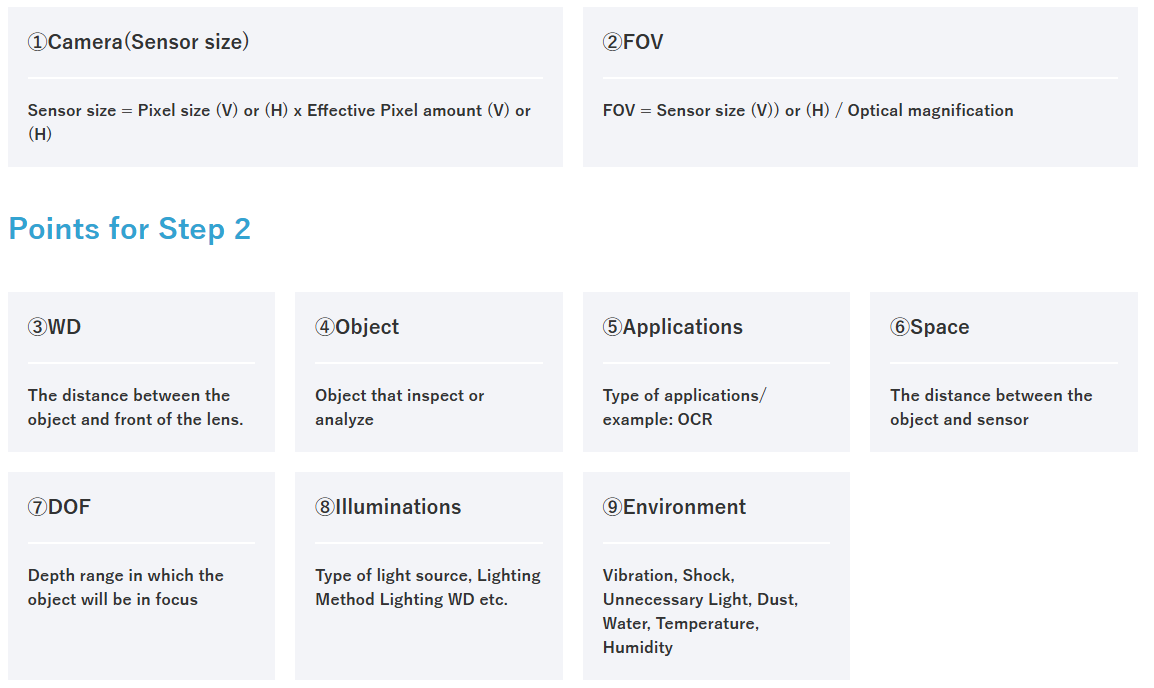
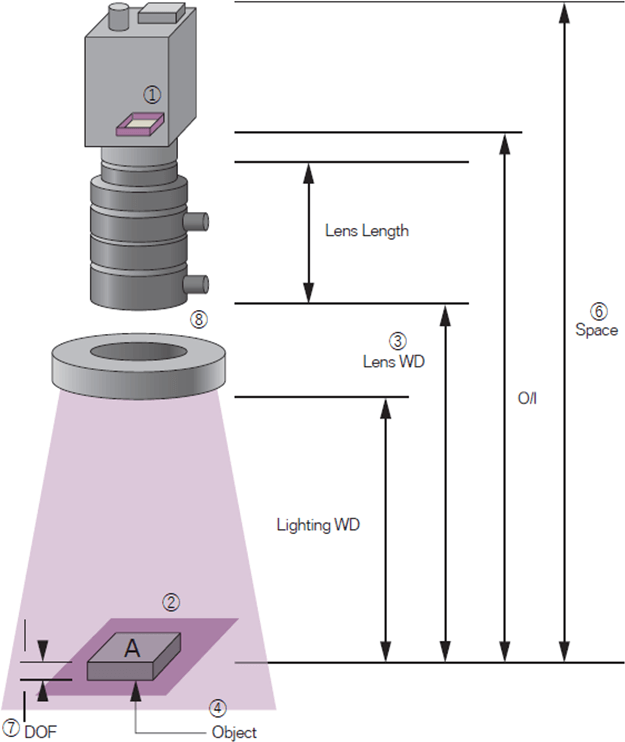
2. Selecting a lens
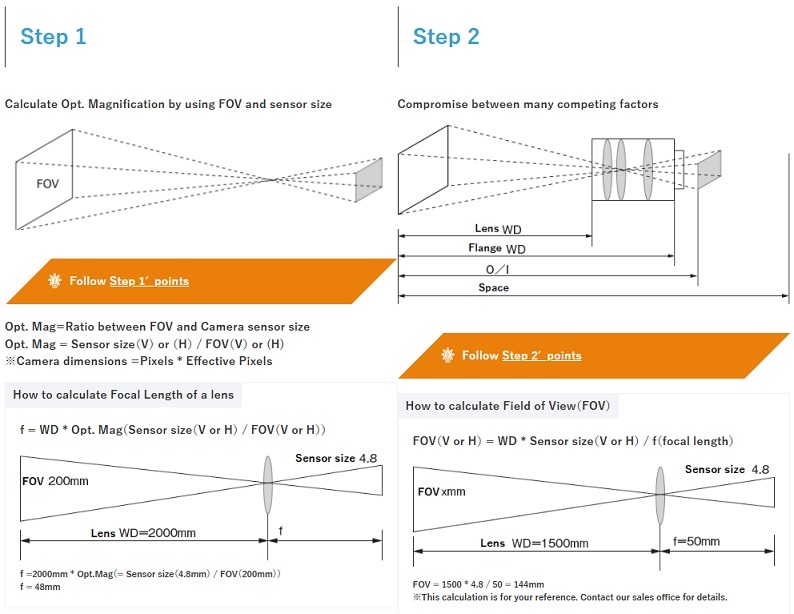
※The focal length of a lens defines the lens’s angular field of view. For a given sensor size, the shorter the focal length, the wider the angular field of the lens. Additionally, the shorter the focal length of the lens, the shorter the distance needed to obtain the same FOV compared to a longer focal length lens
Step 3
Type of Machine Vision Lenses:
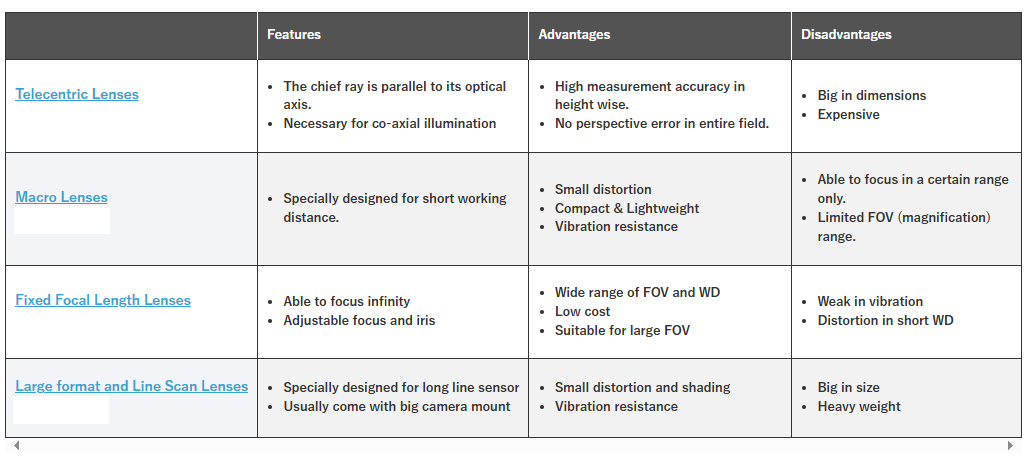
Telecentricity determines the amount that magnification changes with working distance. Better telecentricity means less magnification changes. Telecentric lens has parallel chief rays to its optical axis and bad telecentricity lenses produce images with higher magnification when the object is closer and the object can be seen differently between center and field of image. The degree of telecentricity is measured by the chief ray angle in the corner of the image field. You can easily check the telecentricity using a target as shown below. Telecentric lens is very important for gauging three-dimensional objects or objects whose working distance is not stable.
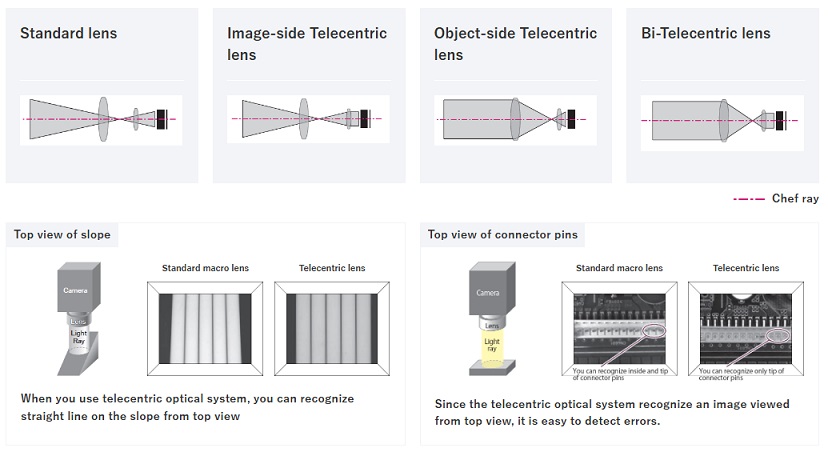
Macro lenses is specially designed for short working distance(around WD 100mm) without a focus adjustment and you need to set-up the camera position precisely. VST has fixed magnification models, variable magnification models and variable aperture models.
Fixed Focal Length Lenses:
Fixed focal length lenses are commonly used optics in machine vision, being affordable products that are well suited for standard applications. The focus can be adjusted from a minimum working distance to infinity.
Large Format and Line Scan Lenses:
Lenses developed especially for the use with line scan cameras. Used for inspection of steel, pulp, fiber/textile, printing, film and other flat materials and Web appearance testing equipment. Usually come with big camera mount.
Objective Lenses:
The optics of the microscope objective are defined by the focal length, N.A., and field of view. It is a very high-powered magnifying glass, with very short focal length.
3. Important factors and lens accessories:
Image Circle, Shading:

Camera Mount:
Each camera mount has a different size thread and flange back (FB: distance from sensor to lens flange)Common camera mount FB are shown below. VST mainly offers C, F and M72 mount but also some special mounts for remote head cameras. Please contact us for more details if you have a special lens mount.
※1. FB size depends on the camera manufacturer. You need to make sure both mount thread and FB are correct to get the correct image.
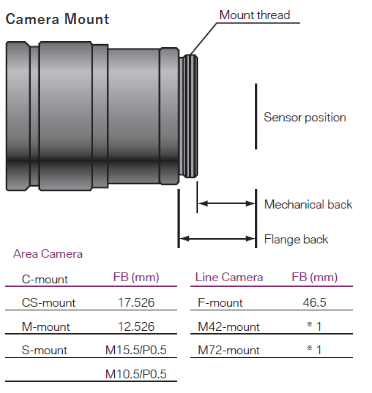
Extension Tube and Rear Converter Lens:
VST offers various accessories. Extension tube is attached between camera and lens to increase the magnification while decreasing WD. Rear converter lens is used to increase the magnification without changing the WD.
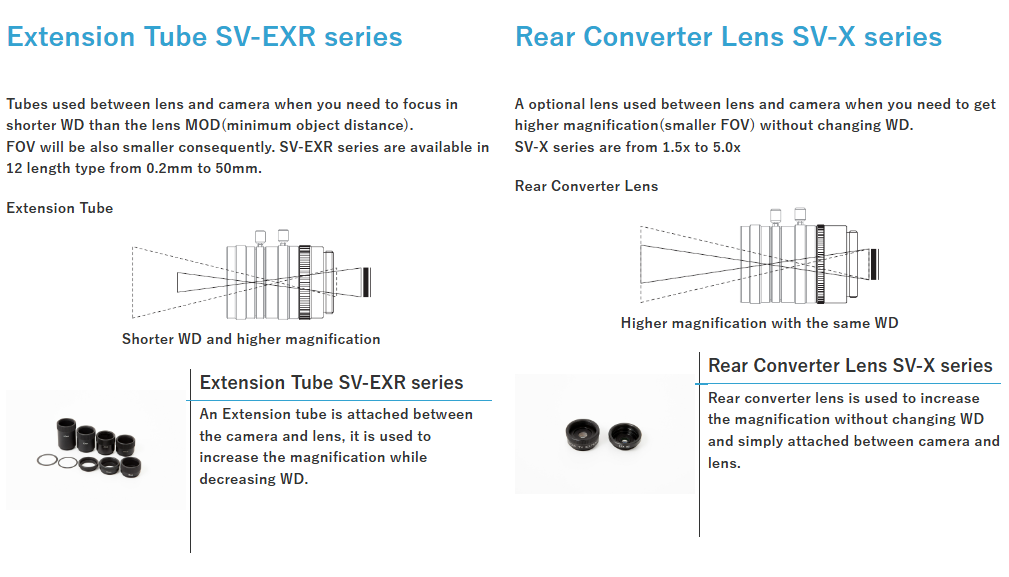
Contact: Jerry_shi
Phone: +8613652508770
Tel: +8613652508770
Email: [email protected]
Add: No.2 MingEn Road,XianXi Village,ChangAn Town,DongGuan City,GuangDong,China